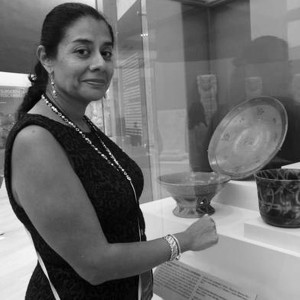The majority of specialist texts which look at the pre-Hispanic history of the San Gervasio site and the island of Cozumel highlight its role as a pilgrimage site and as a trading port, during the Late Postclassic from 1250 to 1550 AD. The information that follows is a brief summary designed to make a visit to the site more rewarding.
Blibliography
Andrews, Anthony P., 1990, “The Role of Ports in Maya Civilization”, en Vision and Revision in Maya Studies, F.S. Clancy y P.D. Harrison (eds.), Albuquerque, University of New Mexico Press.Arden, Traci, 2006, “Mending the Past: Ix Chel and the Invention of a Modern Pop Goddess”, en Antiquity, vol. 80, núm. 307.Escalona Ramos, Alberto, 1946, “Algunas ruinas prehispánicas en Quintana Roo”, en Boletín de la Sociedad Mexicana de Geografía y Estadística, vol. 61, núm. 3, México.Fernández, Miguel Ángel, 1945, “Exploraciones arqueológicas en la isla de Cozumel, Quintana Roo”, en Anales del Instituto Nacional de Antropología e Historia, México, INAH, vol. 6, núm. 1.Patel, Shankari, 2016, “Peregrinaciones a la isla de Cozumel”, en El papel de la arqueoastronomía en el mundo maya: el caso de la isla de Cozumel, México, Oficina de la UNESCO en México/Gobierno del Estado de Quintana Roo.Peraza Lope, Carlos, 2005, “Ceramic Analysis and Sequence from San Gervasio, Cozumel”, en Quintana Roo Archaeology, J.M. Shaw y J.P. Mathews (eds.), Tucson, The University of Arizona Press.Roys, Raph L., 1957, The Political Geography of the Yucatan Maya, Washington D.C., Carnegie Institution of Washington Publication, núm. 613.Sabloff, Jeremy A. y William L. Rathje, 1975, A Study of Changing pre-Columbian Commercial Systems: the 1972-1973 Seasons at Cozumel, Mexico, Cambridge, Peabody Museum of Archaeology and Ethnology.Scholes, Frances V. y Ralph L. Roys, 1968, The Maya Chontal Indians of Acalan-Tixchel. A Contribution to the History and Ethnography of the Yucatan Peninsula, Norman, University of Oklahoma Press.Thompson, J. Eric S., 1990, Maya History and Religion, Norman, University of Oklahoma Press.







